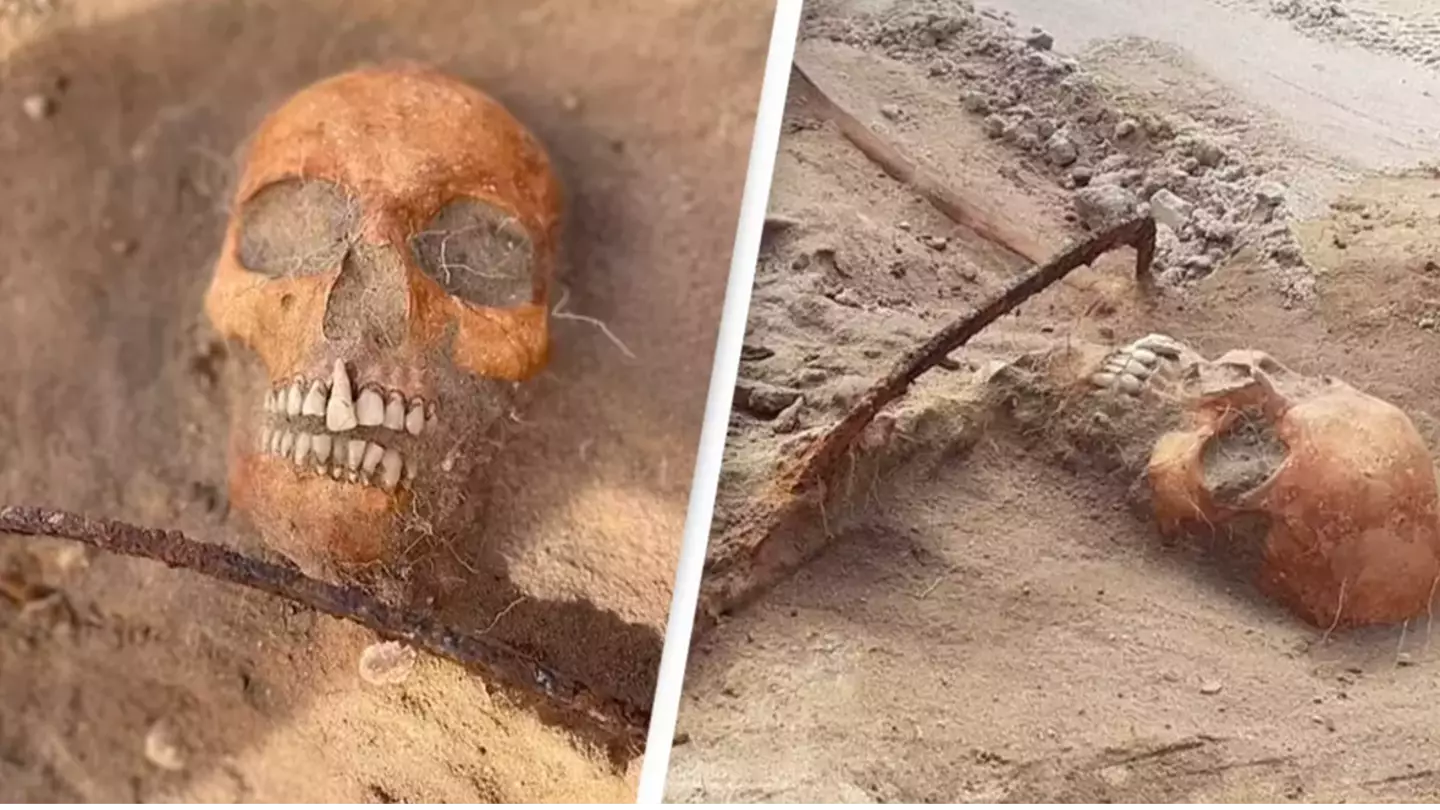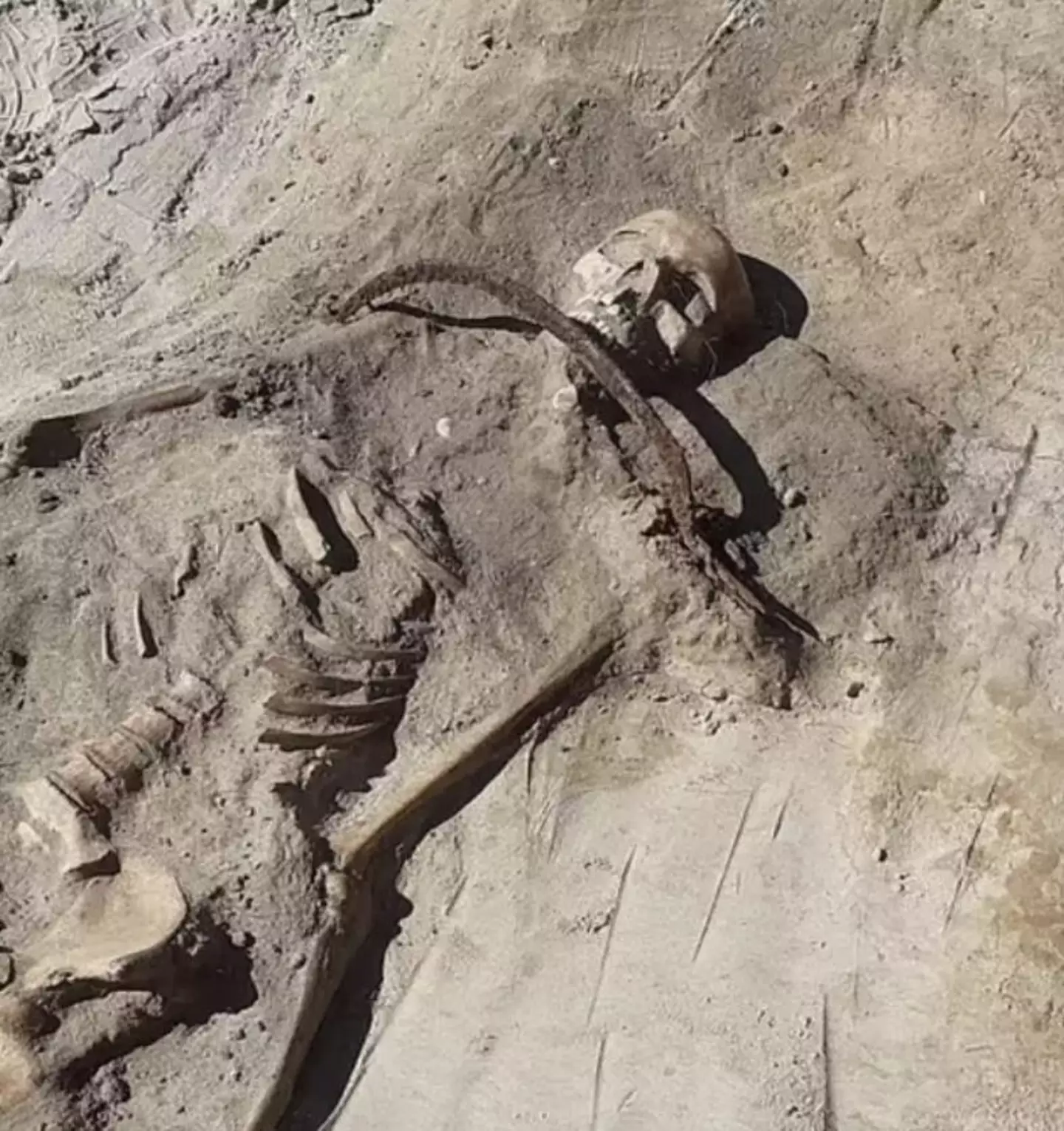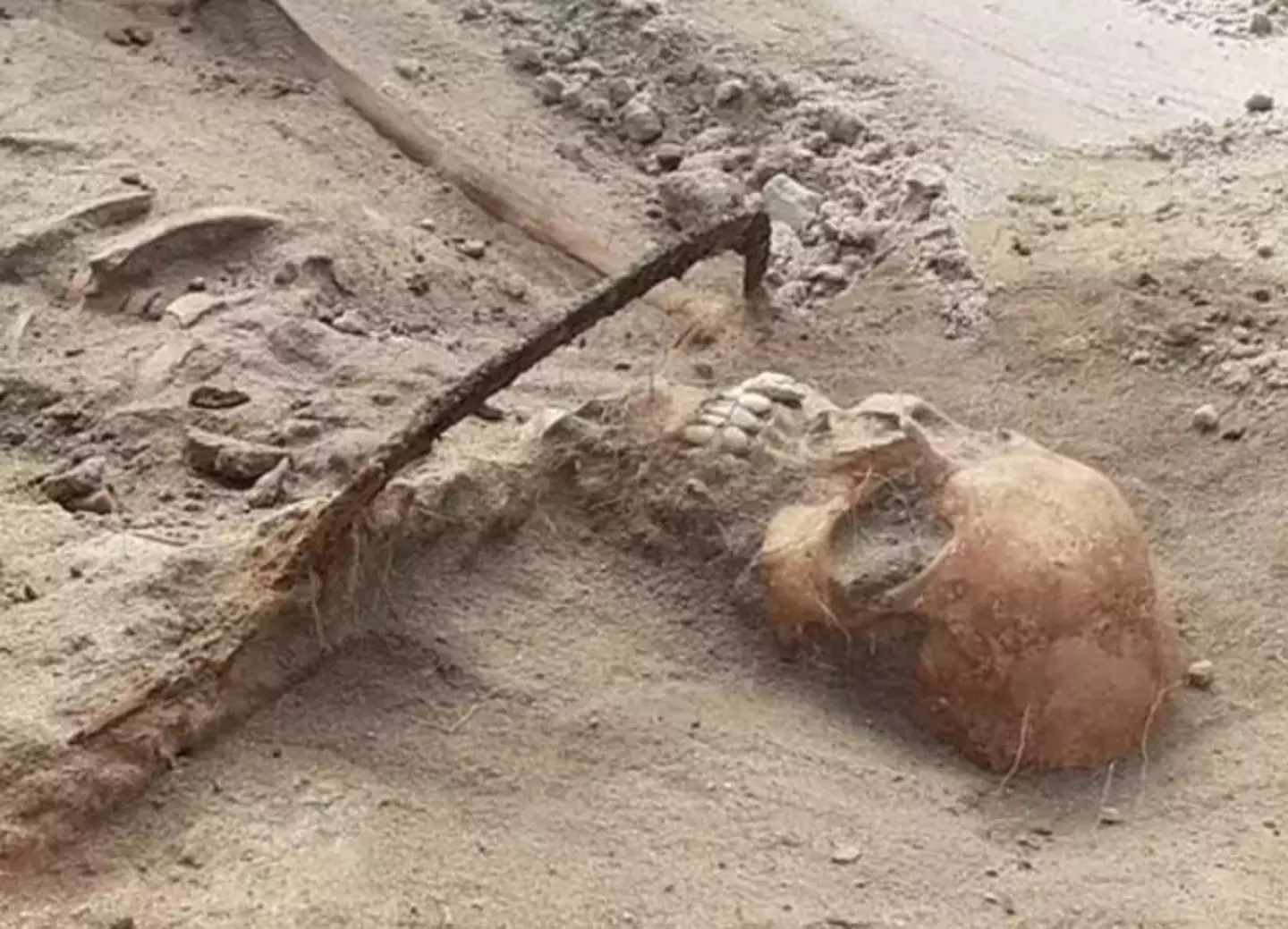
Have you ever thought about what might happen when you die? For the morbidly curious among us, the answer is probably yes.
But while many of us can picture what our funerals might look like or whether we want to be buried or cremated, chances are you've never imagined being laid to rest like this...
Archaeologists were surprised when they discovered the remains of a woman last year - who has since been dubbed a vampire.
Despite what you might be thinking, the woman didn't have Dracula-style fang teeth or a black and red cape. No, much worse.
Advert

She was found with a sickle directly over her neck and a padlock on her toe.
Researchers were conducting a dig at a 17th-century cemetery in the Polish village of Pien when they made the bizarre discovery, with team leader Professor Dariusz Poliński from the Nicholas Copernicus University in the nearby city Torun admitting that the form of burial was unusual for the time period.
A sickle, for those who aren't in the know, is a short-handled farming tool, with a semicircular blade. However, it was the padlock on the toe - a method used to prevent people from rising from the dead - which earned her the vampire moniker among researchers.
Advert
The woman was also discovered with a silk cap on her head, which, according to experts, indicates she had high social status at the time of her death.

Professor Poliński explained: "Ways to protect against the return of the dead include cutting off the head or legs, placing the deceased face down to bite into the ground, burning them, and smashing them with a stone.
"The sickle was not laid flat but placed on the neck in such a way that if the deceased had tried to get up most likely the head would have been cut off or injured."
Advert
He went on to say that the padlocked toe was likely to represent 'the closing of a stage and the impossibility of returning'.
Although it's fair to say that vampires are widely accepted as being fictitious these days, this certainly wasn't the case across 11th-century mainland Europe, where it was feared the dead would rise again and terrorise the community.
The most common method people used to ensure a suspected vampire wouldn't come back to life was to hammer a steak through their skull to ensure they stay dead.

Advert
You've got to admit, this sickle around the neck method is a little bit more creative - although it's not entirely unique.
In fact, back in 2015, archaeologists found skeletons buried in a very similar manner to the Pien find.
The remains of several men were discovered by researchers 130 miles away from Pien, in the village of Srewsko, who also had a sickle against their throats - but there could be an entirely different purpose.
The researchers said back in 2015: "When placed in burials they were a guarantee that the deceased remained in their graves and therefore could not harm the living, but they may also have served to protect the dead from evil forces.
Advert
"According to folk wisdom, a sickle protected women in labour, children and the dead against evil spirits. It also had a role in rituals designed to counter black magic and witchcraft."
Topics: World News, Science
